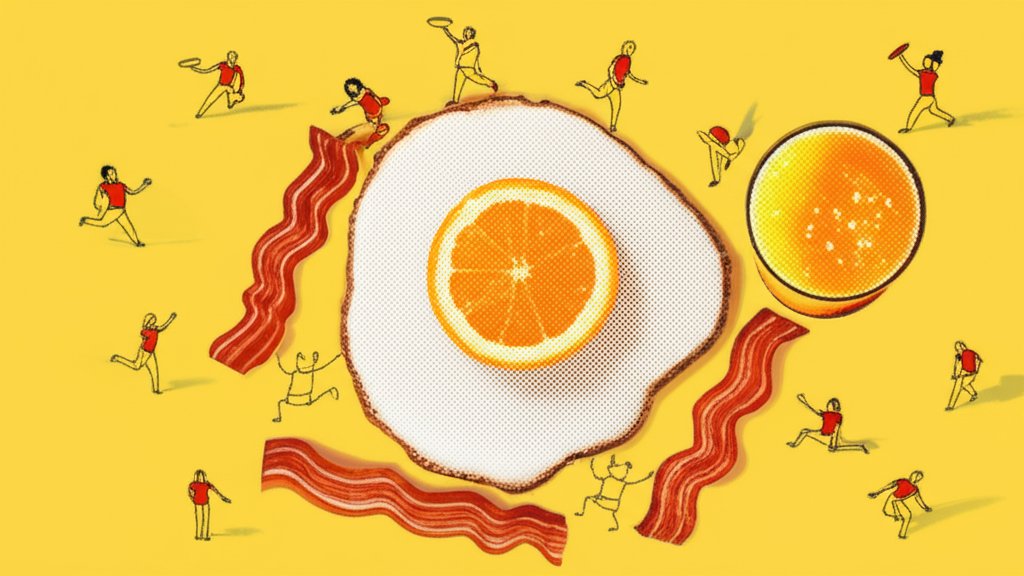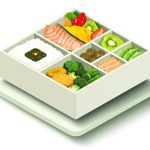Craving a quick and easy breakfast? Scrambled eggs are a go-to for many, but understanding the scrambled egg nutrition facts helps you make informed choices, particularly when you’re considering them alongside other common breakfast staples like saltine crackers. Are you getting the protein and nutrients you need, or just empty calories?
At a glance:
- Discover the complete nutritional profile of scrambled eggs, from protein and healthy fats to vitamins and minerals.
- Learn how different cooking methods and additions impact the overall nutritional value.
- Compare scrambled eggs to other popular breakfast choices, like toast and saltine crackers, to identify the most nutrient-dense option.
- Understand how scrambled eggs can fit into various dietary needs and preferences.
- Debunk common myths about cholesterol and egg consumption.
Unpacking the Basics: Scrambled Egg Nutrition Facts
Let’s dive into the core nutrition found in a standard serving of scrambled eggs (made with two large eggs, no milk or cheese):
- Calories: Approximately 140-160
- Protein: 12-14 grams – essential for muscle building and satiety.
- Fat: 10-12 grams – includes both saturated and unsaturated fats, vital for hormone production and cell function.
- Cholesterol: Roughly 300-400mg – more on this later!
- Sodium: Varies depending on added salt, typically around 140mg without added salt.
- Carbohydrates: Less than 1 gram – negligible carb content.
- Vitamins: A good source of Vitamin A, Vitamin D, Vitamin B12, Riboflavin, and Folate.
- Minerals: Contains Selenium, Phosphorus, and Iron.
Because eggs are naturally low in fiber, they are often paired with other foods such as whole wheat bread, vegetables, or fruit to create a balanced meal.
How Your Cooking Impacts Scrambled Egg Nutrition
The way you prepare your scrambled eggs can significantly alter their nutritional profile:
- Adding Milk or Cream: Increases calories and fat content, particularly saturated fat. While it can create a creamier texture, be mindful of portions.
- Using Butter or Oil: Adds extra fat and calories. Opt for healthier oils like olive oil or avocado oil in moderation.
- Cheese, Bacon, or Sausage: These additions dramatically increase the calorie, fat (often saturated), and sodium content. Use sparingly if you’re watching your health.
- Veggies: Incorporating vegetables like spinach, mushrooms, or bell peppers boosts the vitamin, mineral, and fiber content without significantly increasing calories.
Example: Scrambling two eggs with a tablespoon of butter and a quarter cup of cheddar cheese can easily add an extra 200 calories and 15-20 grams of fat!
Scrambled Eggs vs. the Alternatives: A Breakfast Showdown
How do scrambled eggs stack up against other common breakfast choices? Let’s consider a few comparisons:
| Food | Calories (approx.) | Protein (grams) | Fat (grams) | Key Nutrients |
|---|---|---|---|---|
| 2 Scrambled Eggs | 150 | 13 | 11 | Vitamin A, D, B12, Selenium, Phosphorus, Iron |
| 1 Slice Whole Wheat Toast | 70 | 3 | 1 | Fiber, B Vitamins |
| 3 Saltine Crackers | 60 | 1 | 2 | Minimal; trace amounts of Iron and Folate |
| 1 Cup Oatmeal (plain) | 160 | 6 | 3 | Fiber, Iron, Magnesium |
| 1 Plain Yogurt (6oz) | 100 | 10 | 0 | Calcium, Protein |
| As you can see, scrambled eggs provide a significant amount of protein and essential nutrients compared to saltine crackers or toast alone. To create a more balanced breakfast, consider pairing eggs with whole-grain toast or oatmeal for added fiber and carbohydrates, or with yogurt for an extra calcium boost. |
Scrambled Eggs and Special Diets: What to Consider
Scrambled eggs can be a valuable addition to many dietary plans, but here are a few things to keep in mind:
- Low-Carb/Keto: Scrambled eggs are naturally low in carbohydrates, making them a great choice for these diets.
- High-Protein: Excellent source of protein to support muscle growth and satiety.
- Weight Loss: The protein and healthy fats in eggs can keep you feeling full and satisfied, potentially aiding in weight management.
- Vegetarian: Scrambled eggs are a suitable protein source for lacto-ovo vegetarians.
- Cholesterol Concerns: More on this below, but current research suggests dietary cholesterol has less impact on blood cholesterol levels than previously believed for most people.
Addressing the Cholesterol Question: Should You Worry?
For years, eggs have been demonized for their high cholesterol content. However, current scientific understanding suggests that dietary cholesterol has a less significant impact on blood cholesterol levels for most people than saturated and trans fats.
Here’s what you should know:
- Dietary cholesterol vs. blood cholesterol: Dietary cholesterol (from food) is different from blood cholesterol (produced by your body).
- Saturated and trans fats: These have a greater impact on raising LDL (“bad”) cholesterol.
- Individual variation: Some people are more sensitive to dietary cholesterol than others.
- Moderation is key: Most healthy individuals can enjoy eggs in moderation (1-2 per day) as part of a balanced diet.
If you have concerns about your cholesterol levels, consult with your doctor or a registered dietitian.
Saltine Crackers: A Complement or Competition?
When considering scrambled egg nutrition facts, it’s helpful to think about what you’re pairing them with. Many people reach for toast or crackers. While saltine crackers: Nutrition explained can offer a comforting crunch, they are primarily carbohydrates with minimal nutritional value. They are low in calories and fat and provide little fiber. They offer very little in the way of protein, fiber, healthy fats, vitamins, or minerals. Opting for a slice of whole-wheat toast alongside your scrambled eggs provides more fiber and sustained energy. If you’re using saltines for nausea, consider them a temporary fix, not a regular component of your breakfast.
Maximizing the Benefits: A Scrambled Egg Playbook
Here’s a practical guide to making the most nutritious scrambled eggs:
- Choose high-quality eggs: Opt for organic, pasture-raised eggs when possible for potentially higher nutrient content.
- Use healthy fats: Cook with a small amount of olive oil, avocado oil, or coconut oil instead of butter.
- Load up on vegetables: Add spinach, mushrooms, peppers, onions, or tomatoes to boost the vitamin and mineral content.
- Skip the added sugar: Avoid adding sugary syrups or jams to your eggs.
- Be mindful of portion sizes: Stick to 1-2 eggs per serving for most individuals.
- Pair with fiber-rich sides: Serve with whole-wheat toast, oatmeal, or a side of fruit for a balanced meal.
- Season wisely: Use herbs and spices instead of excessive salt.
Quick Start:
- Breakfast 1: Two scrambled eggs (cooked in olive oil) with spinach and mushrooms, served with a slice of whole-wheat toast.
- Breakfast 2: Scrambled egg burrito with black beans, salsa, and a sprinkle of cheese (use a whole-wheat tortilla).
- Breakfast 3: Scrambled eggs with smoked salmon and avocado.
Quick Answers: Common Questions About Scrambled Eggs
- Are scrambled eggs bad for my heart? For most people, eggs are not bad for heart health when consumed in moderation. Focus on limiting saturated and trans fats in your overall diet.
- Can I eat scrambled eggs every day? Yes, most healthy individuals can enjoy scrambled eggs daily as part of a balanced diet.
- Are scrambled eggs a complete protein? Yes, eggs are a complete protein, meaning they contain all nine essential amino acids.
- What’s the best way to cook scrambled eggs? Low and slow is the key! Use medium-low heat and stir frequently for creamy, tender eggs.
- Are egg whites healthier than whole eggs? Egg whites are lower in calories and fat, but they lack some of the nutrients found in the yolk, such as vitamins and minerals.
- Do organic eggs taste better? Taste is subjective, but some people find that organic and pasture-raised eggs have a richer flavor.
Level Up Your Breakfast
Understanding scrambled egg nutrition facts empowers you to make informed dietary choices. By considering the cooking method, additions, and pairings, you can transform a simple plate of scrambled eggs into a nutritious and satisfying meal. Think beyond just “eggs” and consider the entire breakfast context to fuel your day effectively.

- Why Glass Boxes for Lunch Are Trending for Meal Prep - December 17, 2025
- Bento Box Glass Offers Practical, Eco-Friendly Meal Storage - December 16, 2025
- The Best Bento Box Price For Your Perfect Packed Lunch - December 15, 2025










